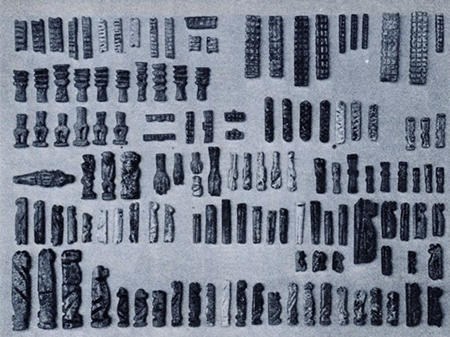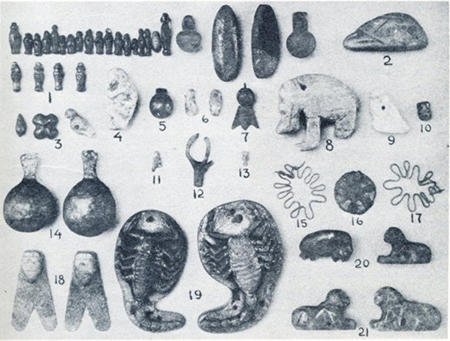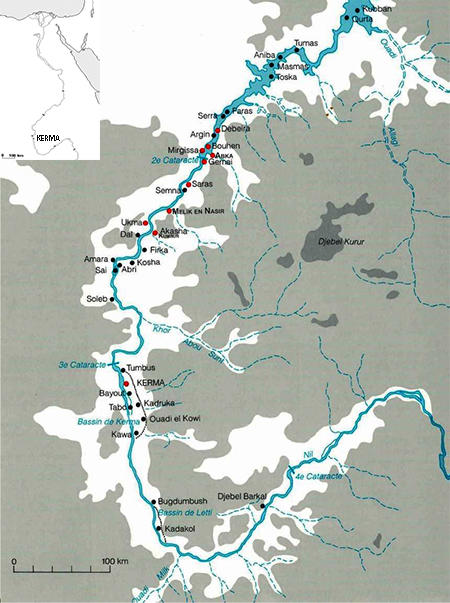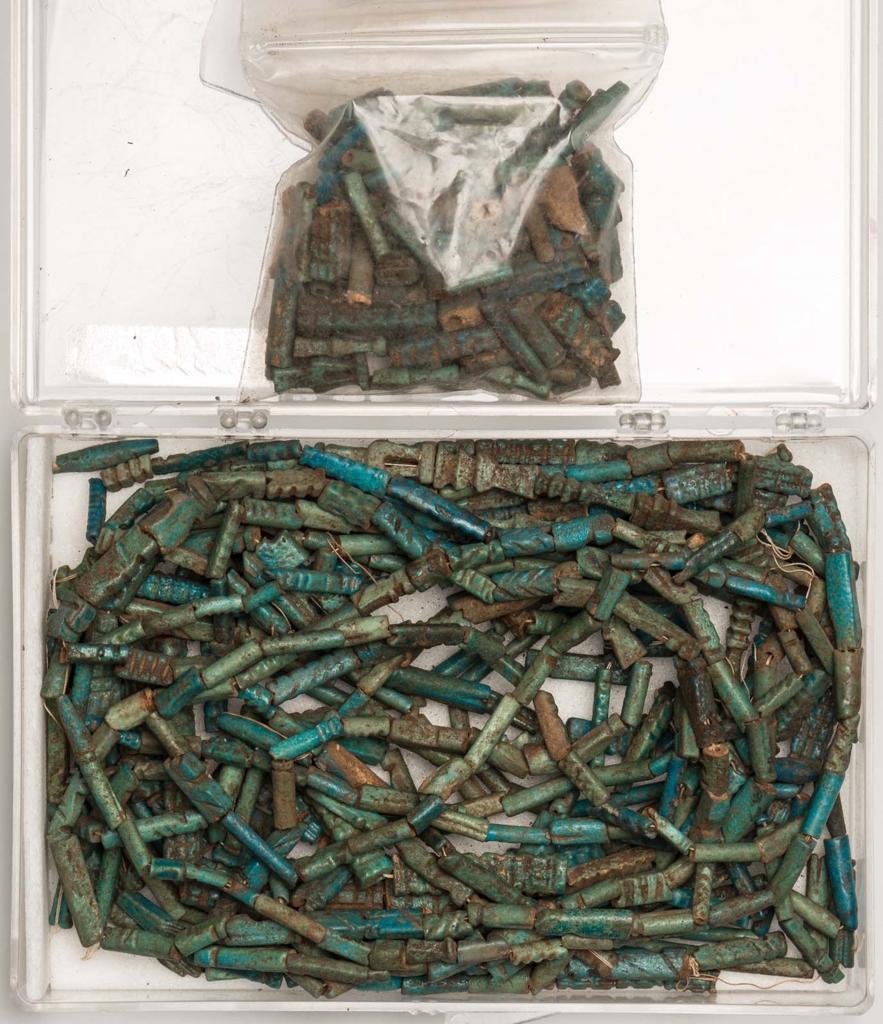Kerma is an archaeological site located in the largest alluvial plain of the northern Sudan, upstream of the Third Cataract in Upper Nubia. G. A. Reisner, director of the Harvard-Boston Expedition, was the first to excavate parts of the site, including the cemetery with the royal tumuli and associated funerary chapels, between 1913 and 1916. Later on, extensive excavations were undertaken at Kerma by C. Bonnet from 1977 and, subsequently, from 2002, by M. Honegger. Kerma and the archaeological culture named after it certainly played a relevant role in the history of Northeastern Africa between the mid-3rd and mid-2nd millennia BC. It is one of the major archaeological sites in Africa, including a large settlment with fully urban structure and a cemetery, both dating to ca. 2500-1500 BC. Kerma was identified with the capital city of the kingdom of Kush, mentioned as an opponent of Egypt in Middle Kingdom and early New Kingdom Egyptian sources. Its strategic location on the Nile allowed for the control of communications along the Nile Valley and therefore Kush acted as a trade patner of Egypt, on the routes to Central Africa and the Red Sea.
Unfortunately, so far, no written traces of the Kerma Culture have been found, therefore we must rely solely on other material evidence in order to reconstruct various aspects of this culture. In this perspective, the study of the amulets is essential because they are an invaluable source of information about the symbols, their protective value, and may help us to gain some insights into a still unknown pantheon that could be very complex. Given the role of Kerma as interface between Egypt and inner Africa, it may have been possibly composed of Nubian features together with Egyptian and southern African elements.
The purpose of the project presented by Dr. Elena D’Itria and granted by the Shelby White and Leon Levy Program is to publish a monograph on the amulets found by G.A. Resiner and presently kept in the Museum of Fine Arts and in the Sudan National Museum. The proposed program also includes the completion of the typological and distributive analysis of the amulets in the different sites of the Kerma culture. The monograph will provide a complete corpus of the Kerma amulets excavated by G.A. Reisner and a systematic comparison with the amulets from other Upper and Lower Nubian sites, as well as with the Egyptian amulets of the period when the Kerma culture flourished, and the comparison of the iconographies of the amulets with the ones characterizing other classes of materials at Kerma. The diachronic and synchronic distribution of the amulets in Kerma and in Upper and Lower Nubia will be outlined and some general remarks on the religion of Kerma and its development in the framework of the historical development of the kingdom will be proposed. The monograph will include an appendix consisting of the catalogue of all the studied amulets.
Of course, to complement these typological and iconographic remarks, it will be crucial to conduct some lab analysis to identify Kerma products and Egyptian imports and to start outlining the technical traditions of the Kerman faïence workshops, manufacturing techniques and used raw materials, as a complete technological study of the faïence objects from Kerma has never been done, and we currently know very little about the faïence manufacturing techniques in 3rd and 2nd millennium BC Upper and Lower Nubia. The reconstruction of the manufacture may also provide information about socio-economic structures in Kerma and their broader economic and social context.
An important achievement of the project will consist of the completion of the digitization of the records of the amulets excavated by G. A. Reisner and of the related database. The whole corpus of digital data produced in the course of the project, and the relational database, will be converted to allow an online publication; for some categories (subject, material, place, chronology, etc.), the value encoded in the original database will be substituted with URI according to the Link Open-Data approach and an online GIS will be implemented. A GIS will allow the immediate spatial location of each record. In this way, by selecting a specific context or structure it will be possible to visualize the description of it and a list of the amulets found within the structure. In the same way, it will be possible to search the place where the objects are presently kept. Dr. Elena D’Itria will coordinate the contributions of the researchers and oversee the development of the online publication, as well as the preparation of the monograph.
Unfortunately, so far, no written traces of the Kerma Culture have been found, therefore we must rely solely on other material evidence in order to reconstruct various aspects of this culture. In this perspective, the study of the amulets is essential because they are an invaluable source of information about the symbols, their protective value, and may help us to gain some insights into a still unknown pantheon that could be very complex. Given the role of Kerma as interface between Egypt and inner Africa, it may have been possibly composed of Nubian features together with Egyptian and southern African elements.
The purpose of the project presented by Dr. Elena D’Itria and granted by the Shelby White and Leon Levy Program is to publish a monograph on the amulets found by G.A. Resiner and presently kept in the Museum of Fine Arts and in the Sudan National Museum. The proposed program also includes the completion of the typological and distributive analysis of the amulets in the different sites of the Kerma culture. The monograph will provide a complete corpus of the Kerma amulets excavated by G.A. Reisner and a systematic comparison with the amulets from other Upper and Lower Nubian sites, as well as with the Egyptian amulets of the period when the Kerma culture flourished, and the comparison of the iconographies of the amulets with the ones characterizing other classes of materials at Kerma. The diachronic and synchronic distribution of the amulets in Kerma and in Upper and Lower Nubia will be outlined and some general remarks on the religion of Kerma and its development in the framework of the historical development of the kingdom will be proposed. The monograph will include an appendix consisting of the catalogue of all the studied amulets.
Of course, to complement these typological and iconographic remarks, it will be crucial to conduct some lab analysis to identify Kerma products and Egyptian imports and to start outlining the technical traditions of the Kerman faïence workshops, manufacturing techniques and used raw materials, as a complete technological study of the faïence objects from Kerma has never been done, and we currently know very little about the faïence manufacturing techniques in 3rd and 2nd millennium BC Upper and Lower Nubia. The reconstruction of the manufacture may also provide information about socio-economic structures in Kerma and their broader economic and social context.
An important achievement of the project will consist of the completion of the digitization of the records of the amulets excavated by G. A. Reisner and of the related database. The whole corpus of digital data produced in the course of the project, and the relational database, will be converted to allow an online publication; for some categories (subject, material, place, chronology, etc.), the value encoded in the original database will be substituted with URI according to the Link Open-Data approach and an online GIS will be implemented. A GIS will allow the immediate spatial location of each record. In this way, by selecting a specific context or structure it will be possible to visualize the description of it and a list of the amulets found within the structure. In the same way, it will be possible to search the place where the objects are presently kept. Dr. Elena D’Itria will coordinate the contributions of the researchers and oversee the development of the online publication, as well as the preparation of the monograph.




